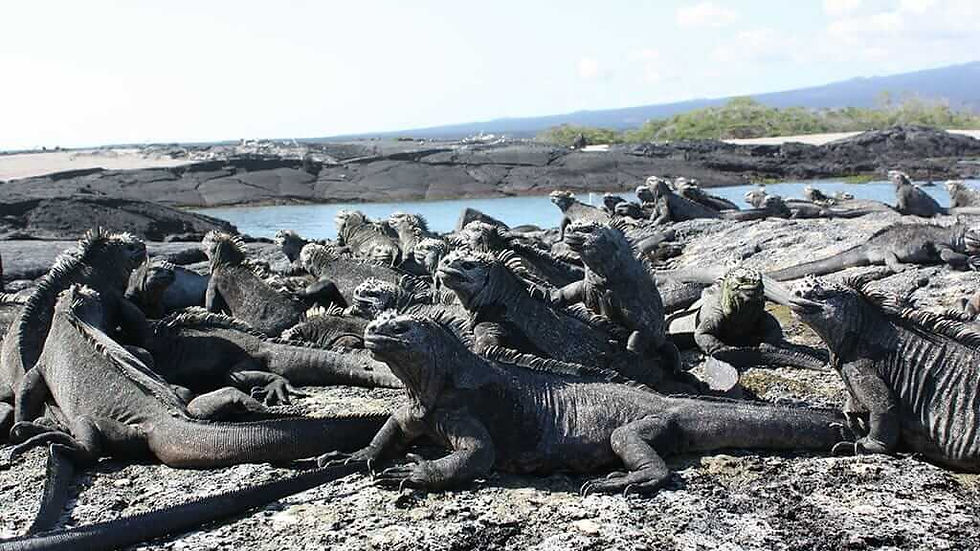Cabo Rosa and Los Tuneles: Galapagos' Hidden Gem
- E.G. Blogger

- Oct 29
- 4 min read
When I first heard about Cabo Rosa and Los Tuneles in the Galapagos Islands, I knew I had to explore this hidden gem. These two spots offer some of the most breathtaking natural beauty and unique wildlife experiences you can find anywhere in the world. Whether you are a nature lover, an adventure seeker, or simply someone who appreciates stunning landscapes, Cabo Rosa and Los Tuneles will not disappoint.
Exploring Cabo Rosa: A Natural Wonderland
Cabo Rosa is a spectacular coastal area located on Isabela Island, the largest island in the Galapagos archipelago. What makes this place so special is its dramatic volcanic formations, crystal-clear waters, and rich biodiversity. The rugged cliffs and lava fields create a striking contrast with the turquoise ocean, making it a perfect spot for photography and nature walks.
One of the highlights of Cabo Rosa is the chance to see marine iguanas basking on the rocks. These unique reptiles are endemic to the Galapagos and are fascinating to observe as they blend seamlessly with the volcanic landscape. You can also spot sea lions lounging on the shore, adding to the lively atmosphere.
For those who enjoy snorkeling, the waters around Cabo Rosa are teeming with colorful fish, sea turtles, and even playful penguins. The underwater visibility is excellent, allowing you to fully appreciate the vibrant marine life. I highly recommend bringing your snorkeling gear or joining a guided tour to make the most of this experience.

Discovering Los Tuneles: A Snorkeler’s Paradise
Just a short boat ride from Cabo Rosa lies Los Tuneles, a unique lava tunnel formation that creates an underwater labyrinth. This area is famous for its clear waters, calm currents, and incredible biodiversity. Swimming through the tunnels feels like entering a secret world filled with fascinating creatures.
Los Tuneles is a top destination for snorkeling and diving enthusiasts. As you glide through the tunnels, you might encounter sea turtles, white-tipped reef sharks, and schools of colorful fish. The volcanic arches and lava formations create natural corridors that are both beautiful and mysterious.
One of the best things about Los Tuneles is its accessibility. The calm waters make it suitable for snorkelers of all skill levels, including beginners. Guided tours often include safety briefings and equipment rentals, so you can feel confident and comfortable exploring this underwater wonderland.
If you want to learn more about this incredible spot, check out this detailed guide on cabo rosa galapagos.

How to Get There and What to Expect
Getting to Cabo Rosa and Los Tuneles is an adventure in itself. Most visitors start from Puerto Villamil, the main town on Isabela Island. From there, you can book a boat tour that includes both Cabo Rosa and Los Tuneles in the itinerary. These tours usually last half a day and provide all the necessary equipment for snorkeling.
The best time to visit is during the dry season, from June to December, when the weather is sunny and the seas are calm. However, the Galapagos is a year-round destination, and each season offers unique wildlife sightings.
When packing for your trip, remember to bring:
Reef-safe sunscreen to protect the delicate marine ecosystem
A hat and sunglasses for sun protection
A waterproof camera or GoPro to capture your underwater adventures
A light wetsuit or rash guard, especially if you plan to snorkel for extended periods
Tour operators in the Galapagos are committed to sustainable tourism, so you can enjoy your visit knowing that your impact on this fragile environment is minimized.
Tips for Making the Most of Your Visit
To truly enjoy Cabo Rosa and Los Tuneles, here are some practical tips I’ve learned from my own experience:
Book a small group tour - Smaller groups mean less disturbance to wildlife and a more personalized experience.
Go early in the morning - The water is usually calmer, and you’ll avoid the crowds.
Listen to your guide - They know the best spots and how to keep you safe while respecting the environment.
Take your time snorkeling - Move slowly and observe the marine life without chasing or touching them.
Bring a dry bag - To keep your belongings safe and dry during the boat ride.
By following these tips, you’ll have a memorable and responsible adventure in one of the Galapagos’ most enchanting locations.
Why Cabo Rosa and Los Tuneles Should Be on Your Galapagos Itinerary
If you’re planning a trip to the Galapagos Islands, don’t overlook Cabo Rosa and Los Tuneles. These sites offer a perfect blend of stunning landscapes, unique wildlife, and exciting water activities. Unlike some of the more crowded tourist spots, this area feels untouched and intimate.
Visiting Cabo Rosa and Los Tuneles allows you to connect with nature in a way that few places on earth can offer. The combination of volcanic scenery, diverse marine life, and peaceful surroundings creates an unforgettable experience.
Whether you are snorkeling through underwater tunnels or watching sea lions play on the shore, you’ll find yourself immersed in the magic of the Galapagos. It’s a reminder of why these islands are a UNESCO World Heritage site and a true natural treasure.

Exploring these hidden gems has been one of the highlights of my travels, and I hope this guide inspires you to discover the wonders of Cabo Rosa and Los Tuneles for yourself.



Comments